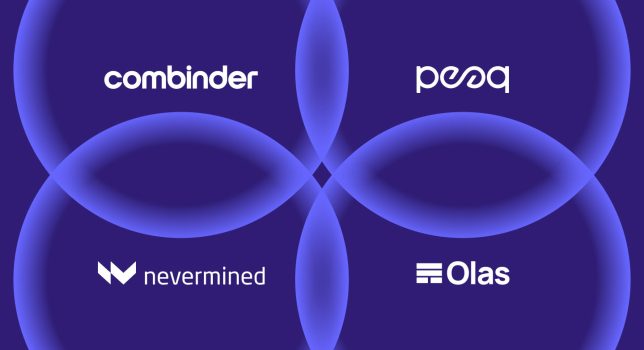In today’s digital age, website architecture is an important factor in SEO. A well-designed website architecture can not only help your website rank higher on search engine result pages (SERPs), but also improve your website’s user experience. Website architecture refers to the design of your website, from the navigation and structure to the content and URL structure.
This includes optimizing the internal linking structure, creating optimized content, and making sure that all elements of the website are properly optimized for search engine crawlers. Additionally, website architecture SEO includes making sure that any external links pointing to the website are properly optimized, and that the website is mobile-friendly.
To optimize your website architecture for SEO, you should focus on five key elements: URL structure, navigation, internal linking, content organization, and page titles. Let’s take a closer look at each of these elements and how to optimize them for SEO.
URL Structure
The URL structure of a website is one of the most important aspects of website architecture when it comes to SEO. URLs should be short, clear, and descriptive so they are easily understood by both search engine crawlers and humans. They should also include keywords that are relevant to the content on the page. For example, if you have a page about “dog training tips”, the URL should include “dog” and “training” as keywords in the URL.
URL structure is key to SEO because it allows search engine crawlers to easily navigate and index a website. A clear and well-structured URL structure helps search engines better understand the content of a website, making it easier for them to rank pages in search engine results pages (SERPs). Properly structured URLs also make it easier for users to remember and share links, helping to improve the visibility of a website.
A good example of a URL structure is to organize content into categories and subcategories. For example, a website about books could have a URL structure like this:
example.com/books/fiction/novels
example.com/books/non-fiction/biographies
example.com/books/childrens-books/picture-books

Navigation
The navigation of your website should be easy for users to understand and use. It should be logical and consistent across all pages of your site so visitors can easily find what they are looking for.
Good navigation structure is essential for SEO because it helps search engines find and index your pages, and it helps users to navigate around your website. It also plays a role in helping your website rank higher in search engine results pages (SERPs).
For example, if you have a website with a large number of pages, it’s important to have a clear navigation menu so that visitors can easily find the page they are looking for. This also helps search engines understand what content is on each page and can potentially boost your ranking. Additionally, if you have an e-commerce site with many products, having an easy-to-navigate menu can help customers quickly find the products they are looking for.
Examples of a good Navigation Structure
- Breadcrumb Navigation: Breadcrumb navigation is a secondary navigation system that shows the user’s current page within the site’s hierarchical structure. It typically appears as a row of links at the top of a page and can be used to indicate the path taken to arrive at the current page.
- Header Navigation: Header navigation is a primary navigation system that appears prominently at the top of each page. It usually contains links to key areas of the website, such as the home page, about page and contact page.
- Footer Navigation: Footer navigation is a secondary navigation system that appears at the bottom of each page. It typically contains links to legal information, a privacy policy, and other important pages.
- Sidebar Navigation: Sidebar navigation is a tertiary navigation system that appears alongside the main content area on each page. It usually contains links to related content or additional resources.
- Drop-down Menus: Drop-down menus are a type of secondary navigation system that appear when a user hovers over a link in the primary navigation menu. They can be used to provide additional context or reveal hidden content within an area of the website.
- Homepage
- Services
- Service 1
- Service 2
- Service 3
- Products
- Product 1
- Product 2
- Product 3
- About Us
- Contact Us
Internal Linking
Internal linking is a type of SEO (Search Engine Optimization) practice that helps to improve the visibility of a website on search engine results pages. Internal linking involves setting up links from one page on a website to other pages on the same website.
This helps to ensure that search engine crawlers can easily find and index all the pages on the site, and it also helps to increase the amount of time visitors spend on the site by providing them with more content options.
Additionally, internal linking can help to improve the relevance of a website for certain keywords, as different pages may focus on specific topics or keywords. Internal linking is also beneficial for overall user experience, as it helps visitors navigate through the website more easily.
Smart Internal Linking Examples
– If you’re looking for information on how to make your website more user-friendly, check out our guide on [website optimization] (https://example.com/website-optimization).
- To learn more about our products, visit our [product page] (https://example.com/products).
- For details on our shipping policies, see our [shipping policy page] (https://example.com/shipping-policies).
- To get a better understanding of SEO, read up on our [SEO basics guide] (https://example.com/seo-basics).
- Interested in learning more about the benefits of using our services? Read our [success stories](https://example.com/success-stories) to find out.
Content Organization
When it comes to optimizing your website architecture for SEO, content organization is key. Your content should be organized into topics or categories so users can easily find what they are looking for. This will also make it easier for search engine crawlers to index your content properly. Additionally, make sure each page has a clear “call to action” that encourages visitors to take action, such as signing up for a newsletter or making a purchase.
- Create a sitemap: A sitemap helps search engines understand the structure of your website and allows them to quickly identify the pages that are most important.
- Create descriptive page titles and meta descriptions: Page titles should be descriptive and accurately reflect the content on the page. Meta descriptions should provide a brief overview of what the page is about.
- Use keywords in headings and content: Use relevant keywords in headings, subheadings, and throughout your content to help search engines understand what topics are covered on the page.
- Optimize images: Optimize images by including descriptive alt text and file names to help search engines identify what is contained in the image.
- Utilize structured data: Structured data can help search engines better understand your website’s content, which can give you an advantage over competitors who don’t use it.
Page Titles
Page titles are an important part of optimizing your website architecture for SEO since they appear in SERPs and help search engine crawlers understand what each page is about. Page titles should be descriptive and include relevant keywords associated with the content on the page. They should also be short, as longer titles may get truncated in SERPs which could lead to a poor user experience.
By focusing on these five elements of website architecture – URL structure, navigation, internal linking, content organization, and page titles – you can optimize your website for SEO and improve both its visibility in SERPs as well as its user experience. Utilizing these strategies will help ensure that your website gets found by potential customers and helps you gain an edge over competitors who aren’t leveraging good website architecture for SEO purposes.









